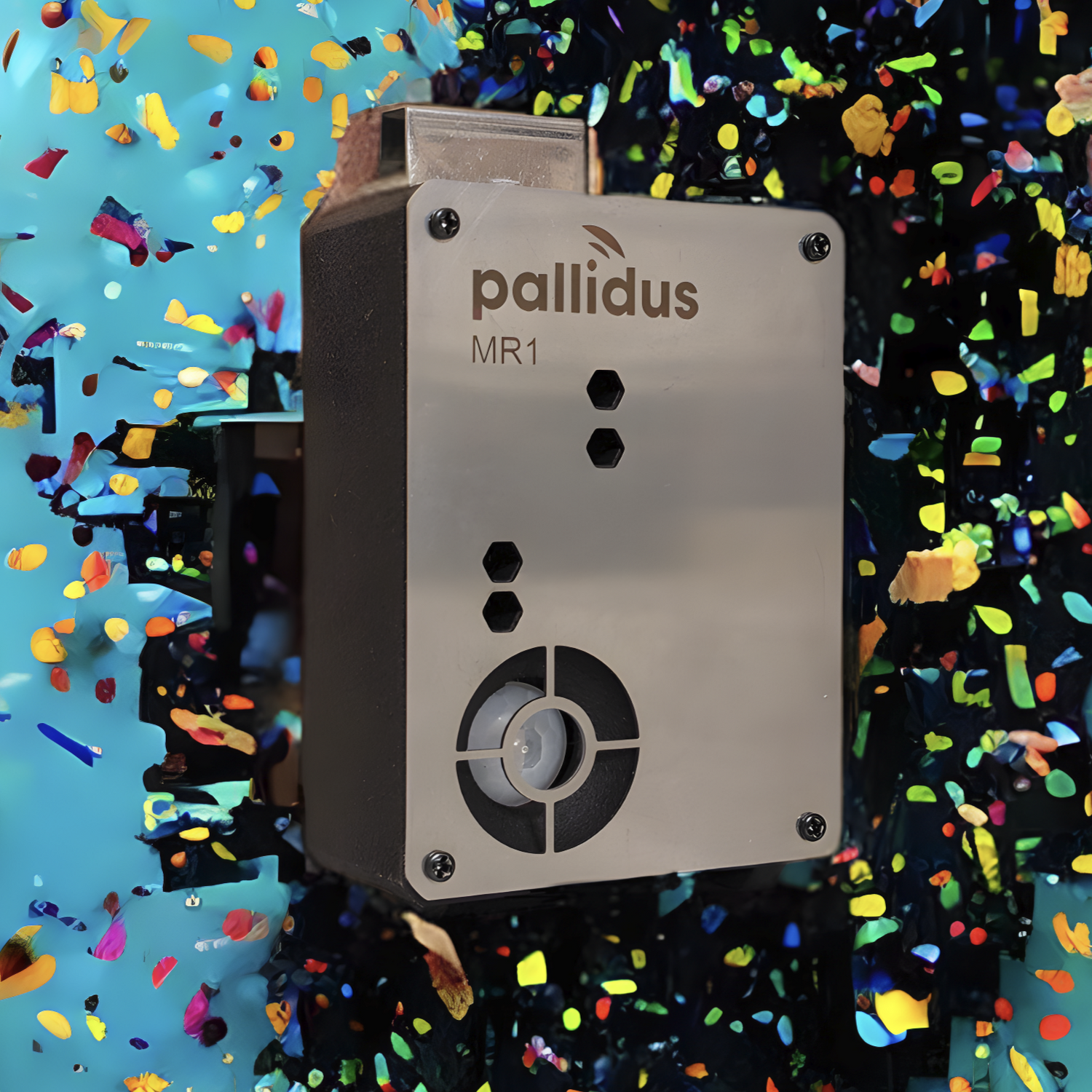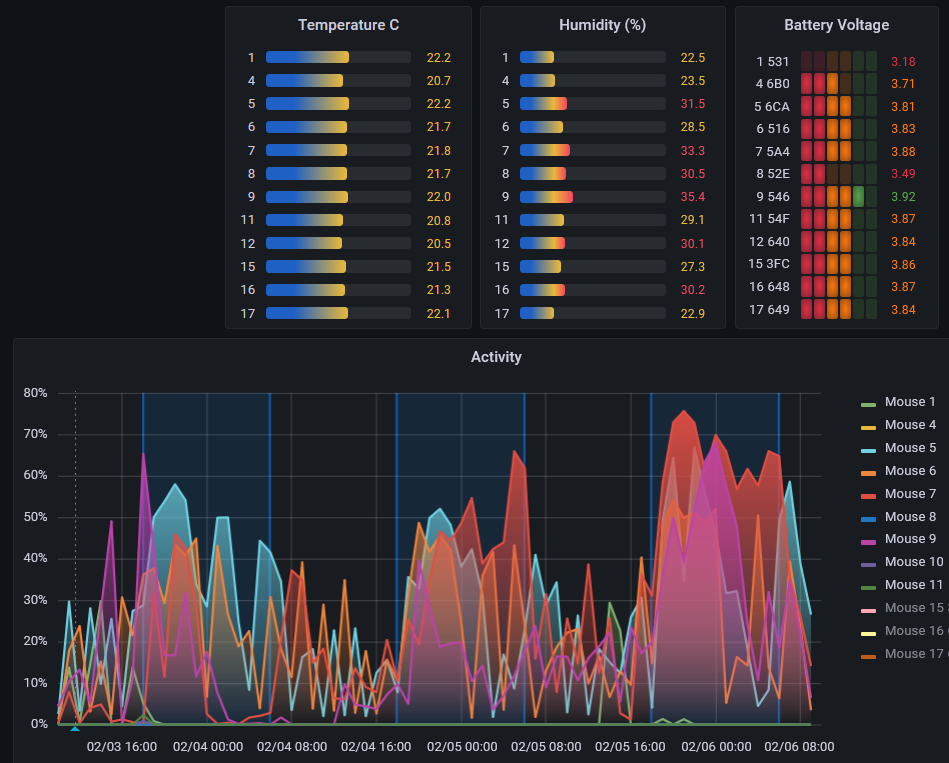
Meet Pallidus
We develop smart sensors for rodent home-cages to collect scientific data and improve animal care.

See Pallidus in Action
Pallidus sensors detect and transmit temperature, light levels, humidity, and activity data from individual cages and display data in real-time on a beautiful cloud dashboard.

Why Monitor Rodents in Homecages?
Improve animal care
Identifying disruptions in the home cage environment can improve animal care.
Ensure reproducibility
Ensuring a consistent home-cage environment can improve scientific reproducibility
Understand the housing environment
Changes in the home-cage environment can influence metabolism, behavior, and disease progression. The MR1 allows you to easily track the home-cage environment.
Monitor circadian rhythms
The MR1 allows you to easily measure circadian rhythms in rodent activity, and verify that facility lighting cycles are accurate

Who is Using Pallidus?
View a breakdown of the academic labs currently using our MR1 sensor. Focus areas include Dietary Studies, Stroke and Recovery, and Molecular Neurobiology of Obesity.
